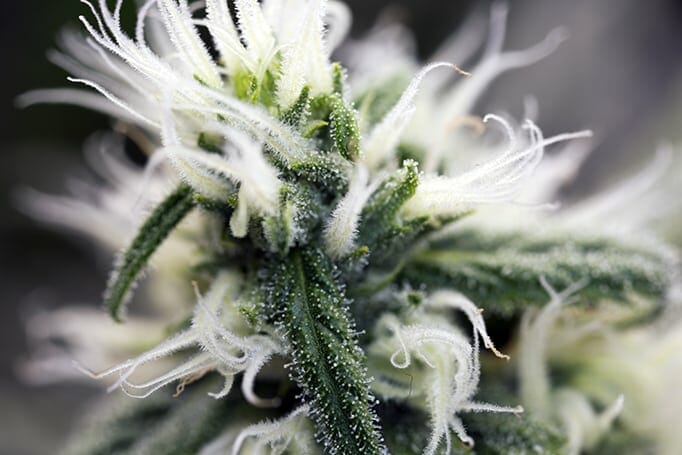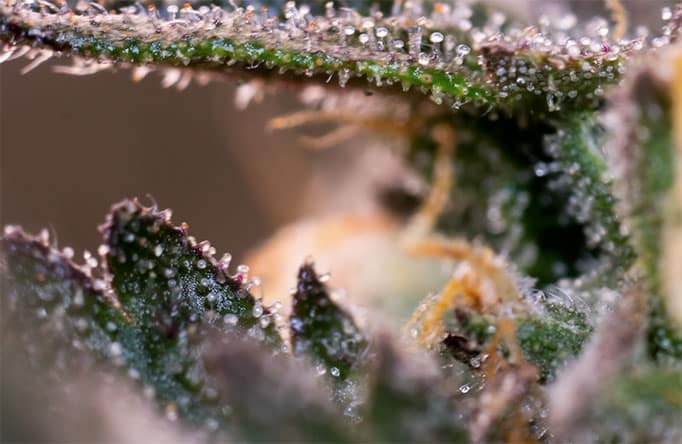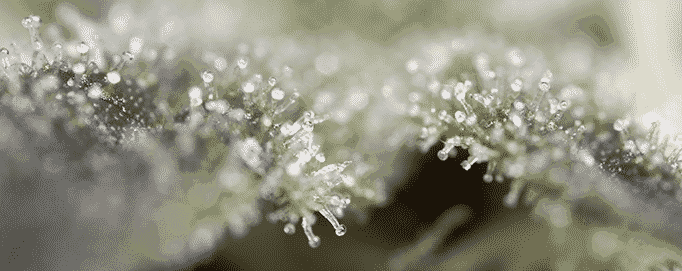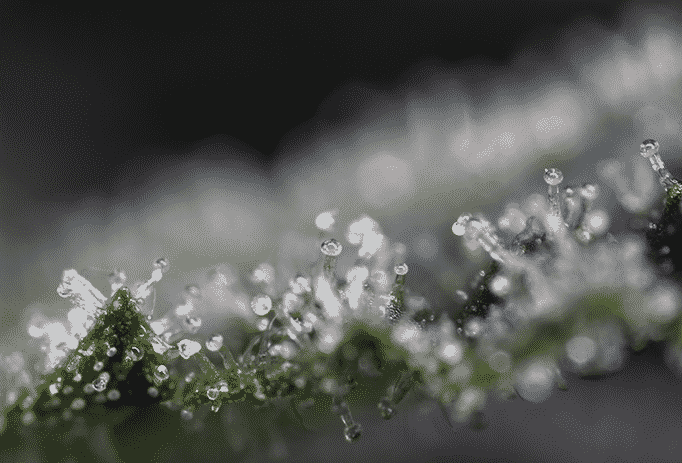14 Apr Uniform, Dense Trichome Development Seen Under Fluence LED Grow Lights

Of the trichomes he saw on Super Silver Haze, Leech says, “Overall trichome development is strong, as we are seeing predominately capitate- stalked trichomes and dense formations.”
Trichomes are tiny, resin-producing hairlike appendages that spring from the surface of plants. Mention that at a dinner party and, depending on who you hang out with, you may receive some puzzled looks. However, if one of the guests were Fluence consultant Ryley Leech, he’d jump right in with a dozen fascinating facts about these tiny spindles.
Leech recently put his trichome-loving brain — and camera; check out the beautiful images accompanying this article — to work on an analysis of a variety of cannabis genetics growing in a controlled environment in southern California. As one of the first Fluence SPYDRx PLUS clients was approaching day 47 of flower and seeing abnormally early maturation of trichomes, Leech was brought in to analyze the development and spectral impact compared to previous cycles under high-pressure sodium (HPS).

Here, on Blackberry Kush, we can see both trichomes with anthocyanin and newly formed, orange-headed trichomes.
As he got into his studies of these California cannabis plants, one of Ryley’s most interesting discoveries was that the trichomes were all unusually uniform. “In strains grown under HPS, I usually see a lot of irregularity as well as lanky, spindly trichomes,” Instead, here he was seeing a surprisingly high number of capitate stalks and dense formations — very good things, he says.
At this facility, he looked at several strains, including Super Silver Haze, THC Bomb, J1, Blackberry Kush and Dr. Who.
Across the board, the strains had uniform capitate stalks,” says Leech. “These trichomes have nice structure with no signs of weakness.”
Leech likes to see uniform trichome production because without uniform stalk or heads, the trichomes lose potency, he says. “The uniformity I’m seeing points to more potency,” adds Leech, who has spent much of his career focusing on medicinal cannabis strains to treat seizures in children. “I pay close attention to trichome production because I’ve learned that trichome types play an important role in developing medicines for various ailments.” And then of course there’s the THC thing.

Leech is impressed with the trichome formation he saw on THC Bomb. “Great-looking flower and trichome production. The majority have perfect structure,” he says.
Leech says he considers three factors when he analyzes trichome formation:
- Nutrient availability
- Genetics
- Light quality
Leech looked carefully at these criteria when analyzing the California grow. The plants he assessed were grown using a living organic soil method, being fed only with water and compost teas. “I believe that this method allows for the greatest nutrient movement due to the complex rhizosphere and also allows a wide range of genetics to be grown within similar soil and the same water/tea,“ says Leech.

Trichome formation on J1 on Day 47: Strong capitate-stalked trichomes and uniformity.
The second factor he considers when evaluating trichome development involves geographical regions and lineage. Certain genetics — from particular parts of the world — behave in predictable ways, he says. And years of experience have led him to expect particular results from particular growing scenarios, such as growing outdoors, or growing under typical HPS lights.
In terms of light quality, Leech says, not much has been studied regarding actual trichome formation under various lighting types. “However, I have studied many flowering plants — under many lighting types — for many years and have a wealth of anecdotal and photographic evidence to rely on in terms of comparison,” he adds.
But much of what he saw in terms of trichome development under the Fluence LED lighting was new and surprising.
I saw a good, solid density of trichomes per square centimeter.”
“When looking at a macro view of the plant, it’s important to notice how the trichome is progressing. Does trichome development continually push out? The further the resin gets from the flower, the more potent it is,” says Leech.
Overall, Leech said he was very impressed at the trichome production on these cannabis strains.
“I need to do more studies, but I think that light intensity seems to drive overall potency, and the specific spectrum being delivered by the Fluence lights help the plants synthesize the cannabinoids,” he says.
We’ll keep you posted on what his next studies reveal, and be sure to check out an article we’ll be publishing soon that explores Leech’s thoughts on anthocyanin formation. You’ll have to tune in to that article to find out what that’s all about and whether you should bring it up at your next dinner party.


